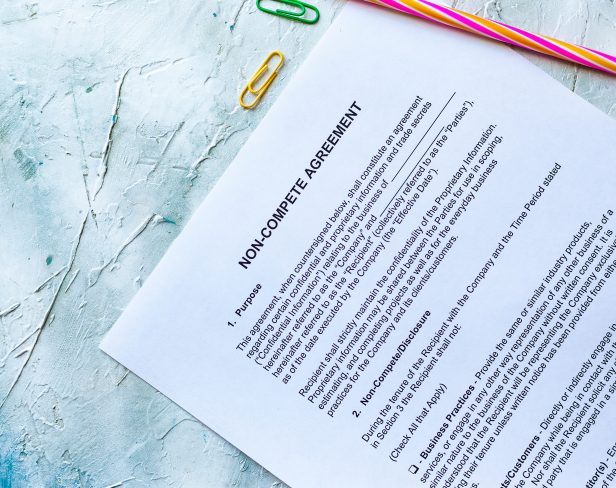Overview
In Taylor v August and Pemberton Pty Ltd [2023] FCA 1313, Ms Fiona Taylor, an employee of a jewellery store was awarded significant damages for sexual harassment and victimisation which she experienced during her employment over a 22-month period. The perpetrator was Ms Taylor’s boss.
Ms Taylor commenced proceedings against her boss and her employer for unlawful sexual harassment under the Sex Discrimination Act 1984 (Cth) (SDA Act). The conduct which formed the basis of the complaint included:
- The giving of 19 gifts, which included a six stone diamond necklace and an emerald and diamond ring;
- Several inappropriate comments, which included telling Ms Taylor she “had bedroom eyes” and that she had a “really nice body”;
- Slapping Ms Taylor’s buttocks; and
- Telling Ms Taylor on two occasions that he had “developed feelings” for her, once in 2019 and again in 2020, knowing on both occasions that Ms Taylor was not interested.
After making a complaint to the Australian Human Rights Commission, the employer demanded that Ms Taylor return gifts and Ms Taylor was accused of misconduct. The employer threatened to report the conduct to the police if the gifts were not returned.
Decision
Katzmann J highlighted that allegations of sexual harassment must be analysed within their context and noted at [125]:
“The sexualisation of women in the workplace often isn’t [explicit]. Innuendo, insinuation, implication, overtone, undertone, horseplay, a hint, a wink or a nod; these are all devices capable of being deployed to sexualise conduct in ways that may be unwelcome … The suggestion that conduct cannot amount to sexual harassment unless it is sexually explicit overlooks the infinite subtlety of human interaction and the historical forces that have shaped the subordinate place of women in the workplace for centuries.”
Katzmann J concluded that the following conduct constituted sexual harassment within the meaning of section 28B(2) of the SDA Act.
- Slapping Ms Taylor on the buttocks in 2019;
- Declaring feelings for Ms Taylor in 2020 and trying to initiate an intimate relationship with her, despite it being unwelcome;
- The giving of gifts to Ms Taylor after the confession of feelings in 2020, which included various pieces of jewellery; and
- Confessing feelings again for Ms Taylor in June 2020, knowing that Ms Taylor’s original position had not changed.
Ms Taylor’s boss and the company were also found to have victimised Ms Taylor when she made a complaint to the Australian Human Rights Commission.
Damages Awarded
Ms Taylor was awarded $140, 000.00 in general damages, with an additional $40, 000.00 for victimisation. When considering aggravated damages, the fact that the employer labelled the complaint as baseless highlighted their inability to see the environment that they had created for Ms Taylor. This led to $15, 000.00 in aggravated damages. The court also awarded $3, 000.00 for future out of pocket expenses, $37, 685.00 for lost earnings and $8, 599.00 in lost superannuation, including interest.
Key Takeaways
This case highlights the severity of sexual harassment in the workplace and the trend toward increasing amounts of damages for victims. The newly legislated positive duty on employers and PCBUs which took effect from December 2022 is likely to place further pressure on employers to take preventative action in relation to sexual harassment. The Australian Human Rights Commission has power to enforce this duty as of 12 December 2023 which can include:
- Investigating workplace issues
- Issuing compliance notices
- Applying to Federal Courts seeking compliance with a notice issued
- Entering into enforceable undertakings with an organisation
We recommend that employers mitigate risks and improve workplace safety by taking the following measures immediately:
- Review their workplace culture as a whole including the level of diversity at senior leadership
- Consider whether the workplace has strong role models who are actively taking steps to eliminate the risk of sexual harassment in the workplace
- Implement a “zero tolerance approach” in relation to all forms of sexual harassment
- Regularly review workplace polices and ensure that regularly training complements written documentation
- Supporting women in the workplace by considering parental leave policies, equal pay and promotion opportunities
- Actively promoting health and wellbeing and workplace safety, including psychological risks associated with sexual harassment, bullying and victimisation and educate staff about the risks these types of conduct poses both for an individual and the business more broadly
- Seek legal advice regarding how to comply with the new positive duty
- Stay informed about the subject, continue to educate and promote awareness of the issue
- Create accessible pathways for victims to make a complaint and support victims when they do raise an issue
- Investigate issues thoroughly, report to management and endeavour to continuously improve
Further Information
Our employment lawyers at Dobson Mitchell Allport regularly advise and represent both employer and employee clients in relation to workplace disputes, including sexual harassment in the workplace.
Please contact Ekaterina Skalidis or Audrey Clarkson for advice in relation to the matters raised by this article.



